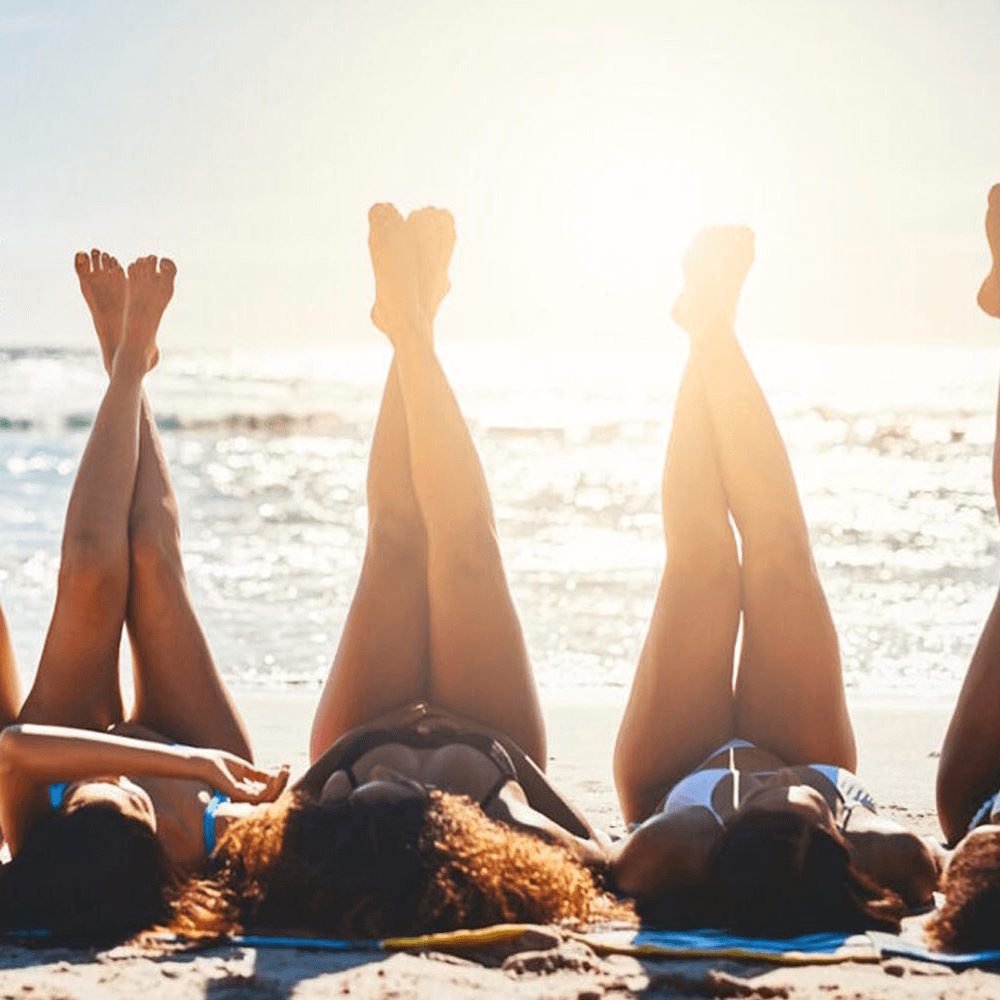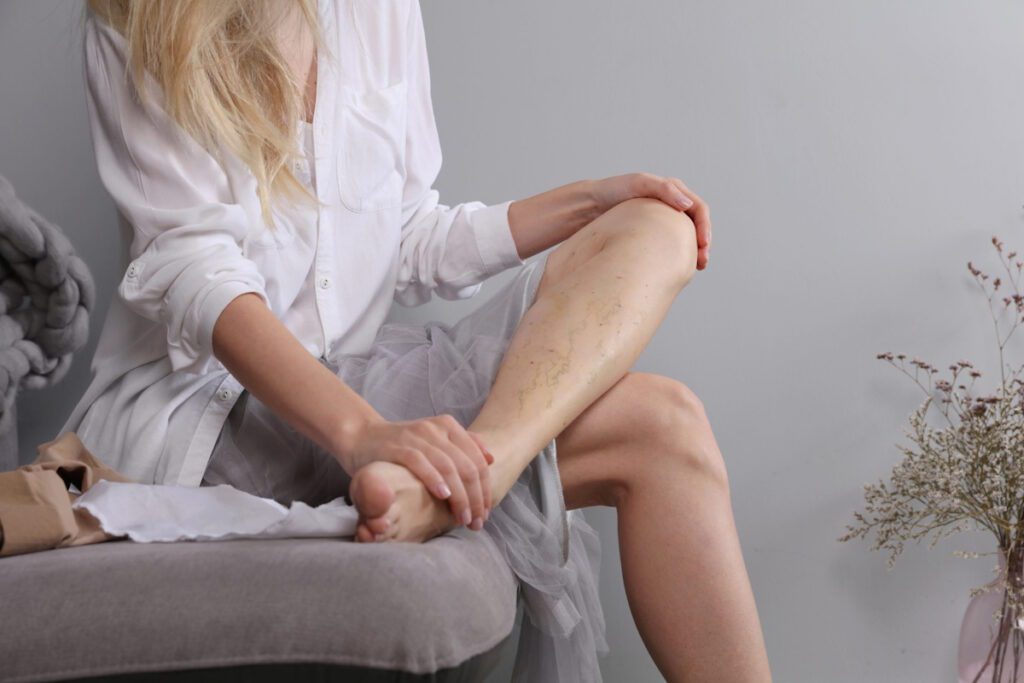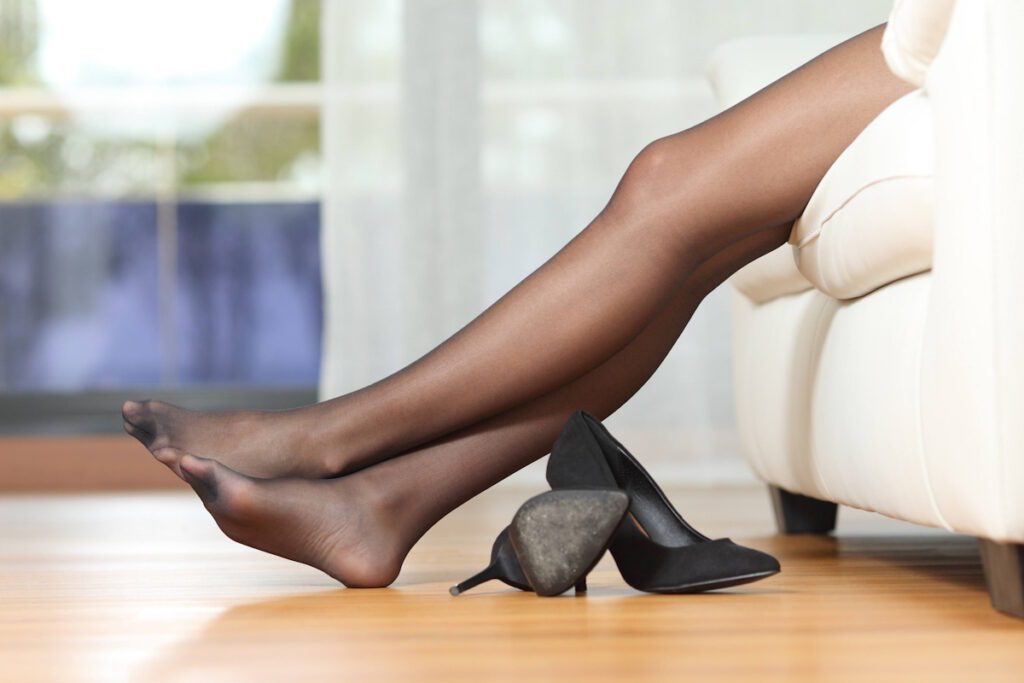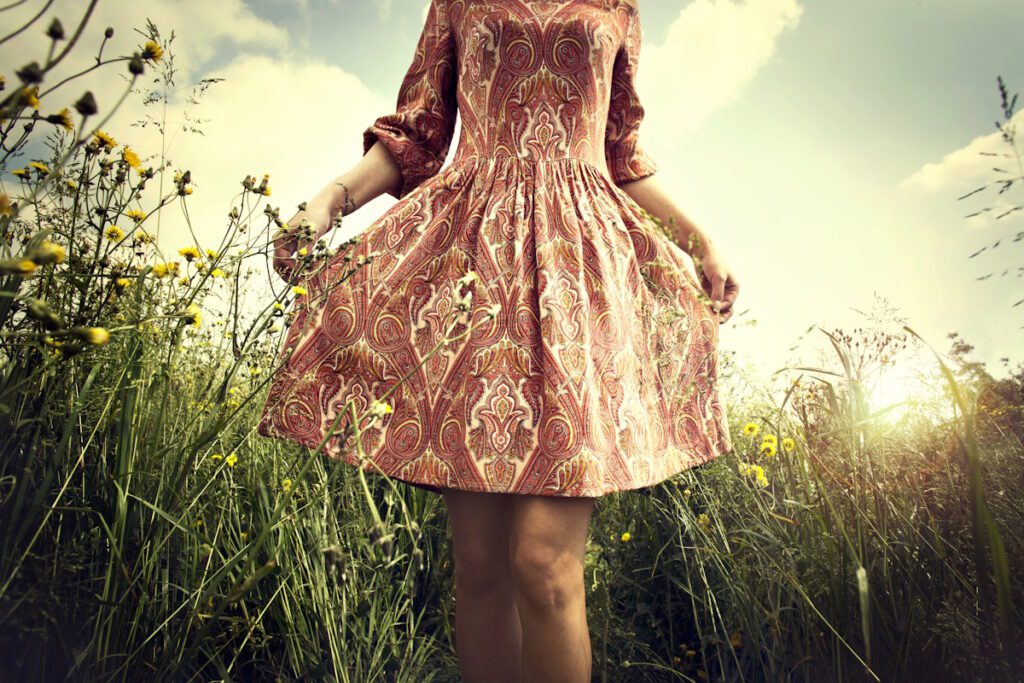Yes, Spider Veins Can Occur in Your 20s and 30s
Author: StrideCare Internal Team

Lacey* was young, active, and always took great care of herself. As a result, she expected to be afforded all the benefits that come with still being in her 20s and 30s—tons of energy, high metabolism, good health, strong bones, and, of course, perfect skin. So why were these random red, blue, and purple web-like spider veins starting to show up on her legs and feet, she thought. They didn’t hurt, but they were unsightly and sometimes itchy. And she could not stop agonizing over them in the mirror. After all, spider veins and their even uglier sister, varicose veins, were something she was used to seeing in the older people in her family—not someone younger.
In all honesty, seeing spider veins in your 20s and 30s is early. But noticing them at a young age isn’t unheard of and doesn’t have to be the end of the world. Our team at StrideCare are experts at diagnosing and treating vascular conditions—including spider veins that aren’t painful but keep you from living life without hiding all or part of your legs. And the good news is that treatment is minimally invasive since these veins do not commonly cause symptoms.
Is it Normal to Get Spider Veins at a Young Age?
Spider veins, also known as telangiectasia, are red, blue, or purple web-like lines and patterns on the most superficial layer of your skin. They are not painful, though they can become more visible over time and may feel itchy. Often, they can be found on your legs and feet. But they can also appear on your cheek and nose areas. Spider veins are easy to diagnose because they are a significantly smaller and less impactful vein issue than varicose veins, which impact roughly 25 million men and women in the United States and are a different condition altogether.
- Spider veins are typically characterized by the following:
- Small, thread-like veins of varying colors
- Measuring about 1-1.5mm
- Sometimes accompanied by itchiness, irritated skin, burning, numbness, and pain in the affected area

It can be alarming when you spot your first series of spider veins in your 20s or 30s. But this is usually only because most of us are used to reading online and in various medical journals that varicose veins and spider veins are more common in women and older adults between 40 to 80 years old. These statistics are also easily driven home by what we see in daily life—perhaps your grandmother and mother always wore long pants to cover them up, or your father battled vein issues as he aged. Not once did you notice people your own age having similar issues—so the fact that you now have spider veins at 25, 29, or 32 years old gives you reason to be concerned.
The reality is that having spider veins early in life is more common than you think. So, what factors might be contributing to you experiencing them at such a young age?
Top 8 Causes for Leg Spider Veins at a Young Age
- Heredity — Regardless of your age, statistics show that roughly half of all varicose vein and spider vein patients have a family history. So, if your mother or grandmother had spider veins, the odds are higher that you will too.
- Pregnancy — Many women choose to get pregnant or are on birth control in their 20s and 30s. As a result, hormonal changes such as increased estrogen levels that naturally come with that process increase blood volume and stress on vein walls and valves. This leads to spider veins.
- Sun exposure — Young people love having fun in the sun. And many of us take precautions to protect ourselves from the sun’s UV rays to prevent things like sunburn and age spots. But sun exposure and increased temperatures generally can cause veins to dilate and enlarge. As a result, new spider veins can form, and existing ones worsen.
- Lifestyle habits — Obesity increases pressure on your veins. The same goes for eating high-fat foods and those with a lot of salt, which increases the odds of developing venous insufficiency.
- Jobs — Many people with spider veins and varicose veins have jobs that require them to stand or sit for long stretches, which inhibits blood circulation. This includes CPAs, waiters, retail workers, assembly line workers, etc.
- Fair skin — Spider veins generally don’t care what type of skin type or skin color you have, but fair-skinned people have been shown to either be more prone to spider veins or experience more distinctive spider veins that are more visible simply because their skin is lighter.
- Excessive alcohol consumption — Drinking alcohol doesn’t directly cause varicose veins and spider veins. It’s also OK to drink when it’s done responsibly and not in excess. But alcohol can affect your overall circulatory system and worsen spider vein symptoms.
- High heels — Wearing high heels does not directly cause spider veins, but they can reduce muscle pump function with continuous use and may represent a causal factor of venous disease symptoms.

What Are My Options for Spider Vein Treatment?
If you’re bothered by spider veins in your 20s and 30s, it’s time to look into treatment. The good news is StrideCare has minimally invasive treatment options to consider.
Sclerotherapy
Specialists inject a small amount of a specially formulated chemical solution full of sclerosing agents into the affected veins to reduce pain and discomfort caused by the enlargement or swelling of the veins. This solution irritates the vein walls and causes the vein to collapse and disappear.
Radiofrequency Ablation
A thin catheter is inserted into the diseased vein through a small puncture. The catheter is guided up into the great saphenous vein in the thigh or the small saphenous vein in the calf. The radiofrequency energy is delivered to the inside of the vein, which cuts off blood flow and relieves symptoms.
Microfoam Ablation
With this procedure, your specialist injects a special microfoam into your affected veins to relieve symptoms without the use of heat or tumescent. The foam fills the desired section of the vein, and the diseased vein collapses. Blood flow then shifts to healthier veins nearby.
Stop Seeing Your Spider Veins with StrideCare

We see patients all the time who are either uncomfortable with how their legs look as a result of their spider veins or need treatment due to ongoing uncomfortable symptoms. And believe it or not, some of them are still in their 20s and 30s. Spider veins at these early stages of life is treatable. The reality is that if left unchecked, your spider veins could grow in numbers and cause painful symptoms beyond just being a cosmetic annoyance. If your veins need treatment—or you have questions on how to avoid the onset of venous disease—the experts at StrideCare will recommend an individualized plan to help you get the best results.
StrideCare has long been a leader in performing leading-edge procedures to treat vein disease and symptoms that, while minor in their earliest stages, can eventually lead to more serious and life interrupting issues. This includes spider veins, as well as venous insufficiency, varicose veins, diabetic vascular disease, venous ulcers, peripheral artery disease, leg discoloration, lymphedema, restless legs syndrome, and more—all the while providing compassionate patient care.
Prior to starting any new treatment or questions regarding a medical condition, always seek the advice of your doctor or other qualified health provider. This information is not a substitute for professional medical advice.
StrideCare serves the South Texas area including Houston, San Antonio, Austin, Round Rock, Bastrop, Brushy Creek, Cedar Park, Converse, Georgetown, Hutto, Kyle, Leander, Marble Falls, New Braunfels, Pasadena, Pearland, Pflugerville, San Marcos, Schertz, Houston, Sugar Land, Katy, Webster, Bay City, Clear Lake, Lake Jackson, The Woodlands, Universal City, Spring, Kingwood, Stafford, Conroe, Texas City, Cypress, League City, Bellaire, and more.
*Patient stories are true. Names and/or photos may be changed to protect patient confidentiality.


